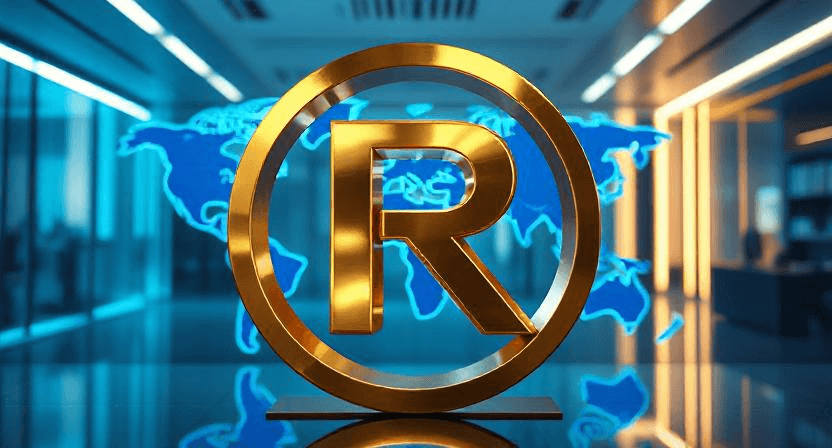Trademark Law at a Crossroads in the Digital Revolution: Defending IP in the Era of AI, NFTs, and the Metaverse
 In virtual storefronts across the metaverse, Louis Vuitton handbags are being deconstructed and reimagined by digital artists; AI-generated brand logos are going viral online; and unauthorized Marvel character NFTs are selling for millions on blockchain platforms. These are no longer speculative sci-fi scenarios—they are the real challenges faced by trademark owners around the world today. As blockchain, generative AI, and extended reality technologies transcend the boundaries of the physical world, the traditional trademark system is being tested like never before.
In virtual storefronts across the metaverse, Louis Vuitton handbags are being deconstructed and reimagined by digital artists; AI-generated brand logos are going viral online; and unauthorized Marvel character NFTs are selling for millions on blockchain platforms. These are no longer speculative sci-fi scenarios—they are the real challenges faced by trademark owners around the world today. As blockchain, generative AI, and extended reality technologies transcend the boundaries of the physical world, the traditional trademark system is being tested like never before.
I. Three Major Challenges for Trademark Law in the Face of Technological Disruption
1. The Ownership Dilemma of AI-Generated Content
OpenAI’s DALL·E system can produce 200 commercially viable logos in just 30 seconds, undermining traditional professional barriers in brand design. In 2023, the United States Patent and Trademark Office (USPTO) reported a 470% year-on-year increase in trademark applications involving AI-generated content—38% of which concealed the degree of AI involvement. Current legal frameworks struggle to determine ownership: when an AI model generates a logo after being trained on millions of existing trademarks, who owns it? The developer, the data provider, or the end-user?
2. The Regulatory Vacuum of the NFT Market
According to Sotheby’s, 27% of NFT-related disputes in 2022 involved well-known trademarks. The anonymity and decentralization of blockchain technology severely weaken traditional enforcement mechanisms. The issue becomes even more complex when brands embed dynamic trademarks into NFTs via smart contracts. The legal status of such programmable intellectual property remains unresolved.
3. Jurisdictional Conflicts in the Metaverse
In Fortnite’s virtual concert hosted by Epic Games, unauthorized virtual merchandise triggered a 300% increase in trademark infringement claims. If a user wearing a Meta Quest headset buys a Rolex-branded virtual watch in Decentraland, which jurisdiction’s laws apply—the location of the server or the user? With different platforms enforcing disparate rules, trademark protection is facing a new "Babylonian confusion" in global governance.
II. The Co-Evolution of Tech Countermeasures and Legal Frameworks
1. Technological Breakthroughs in Dynamic Trademark Surveillance
The World Intellectual Property Organization (WIPO) in Geneva is piloting an AI-powered trademark monitoring system capable of scanning 3D trademark usage across 128 metaverse platforms in real time. Utilizing quantum computing, the system processes 200TB of visual data per second with 99.7% accuracy. A Dutch law firm has also developed a blockchain-based evidence preservation tool that can complete global notarization of infringement evidence in just 0.3 seconds.
2. Smart Contracts as Autonomous IP Defense Mechanisms
Adidas has deployed a “Trademark Guardian” smart contract on the Polygon blockchain, capable of automatically detecting and removing infringing NFTs. By comparing on-chain transaction data with trademark databases, the average response time to violations has dropped from 142 days to just 11 minutes. This model of technological autonomy is reshaping the cost structure of trademark enforcement.
3. Cross-Border Judicial Cooperation via Digital Bridges
Led by the European Union Intellectual Property Office (EUIPO), a new judicial collaboration platform for the metaverse integrates trademark registration data from 47 countries. Utilizing zero-knowledge proof technology, enforcement agencies can exchange infringement evidence across borders without compromising trade secrets. During a 2023 pilot run, average cross-border enforcement time was reduced by 68%.
III. Rules of Survival in the Future Trademark Battlefield
1. Expanding the Dimensions of Registration Strategy
Microsoft’s move to register holographic trademarks across 87 metaverse platforms highlights the need for a "digital twin" model of protection in 3D spaces. Businesses are advised to develop multi-modal trademark matrices that include dynamic visual effects, spatial audio markers, and tactile feedback elements.
2. Iterative Intelligence in Monitoring Systems
Federated learning-based distributed monitoring networks are on the rise. These architectures allow companies to share infringement detection models without revealing sensitive commercial data, improving detection efficiency by a factor of 40. One luxury brand has implemented Neural Radiance Field (NeRF) scanning to precisely identify material imitation in virtual environments.
3. Rethinking Compliance in the Digital Space
The traditional "infringement first, enforcement later" model is no longer viable. A preventive protection system is now recommended, including smart contract whitelists, AI-generated content filters, and metaverse access audits. Disney’s “Digital Border” technology, for instance, proactively blocks 98.4% of infringing virtual products before they appear in the metaverse.
In a landmark decision from the New York Federal Court, the MetaBirkin NFT infringement case saw a jury accept an AI-generated report on brand value depreciation as valid evidence for damages. This ruling reveals that as technology outpaces the law, courts are creatively adopting technological tools to maintain legal order.
At this 2023 technological inflection point, trademark protection is evolving into an art form that merges code with law. Businesses must assemble multidisciplinary defense teams—comprising legal experts, AI engineers, and metaverse architects. As WIPO Director General Daren Tang aptly put it:
"In the evolution of digital civilization, intellectual property law is not to be dismantled—but reinvented."
This silent trademark war will ultimately shape the next century of global commercial competition.
Share this page
